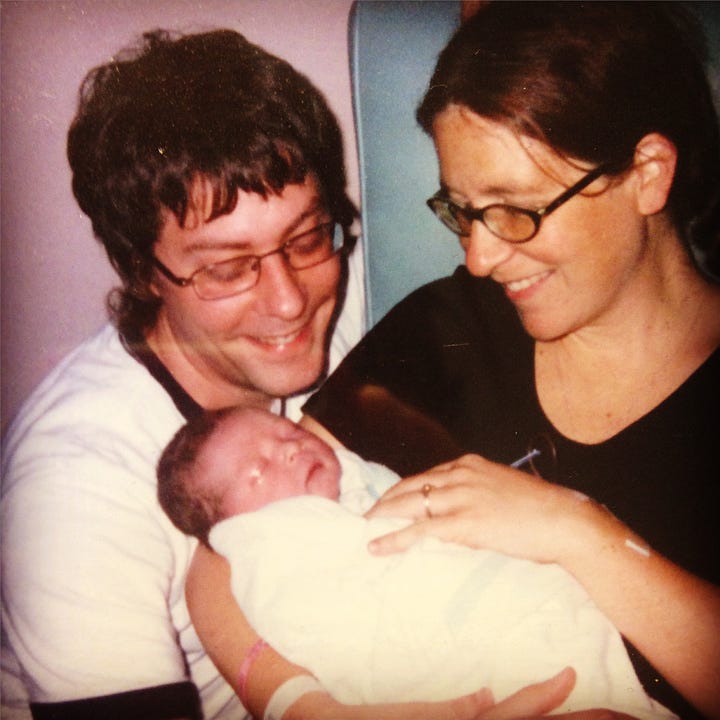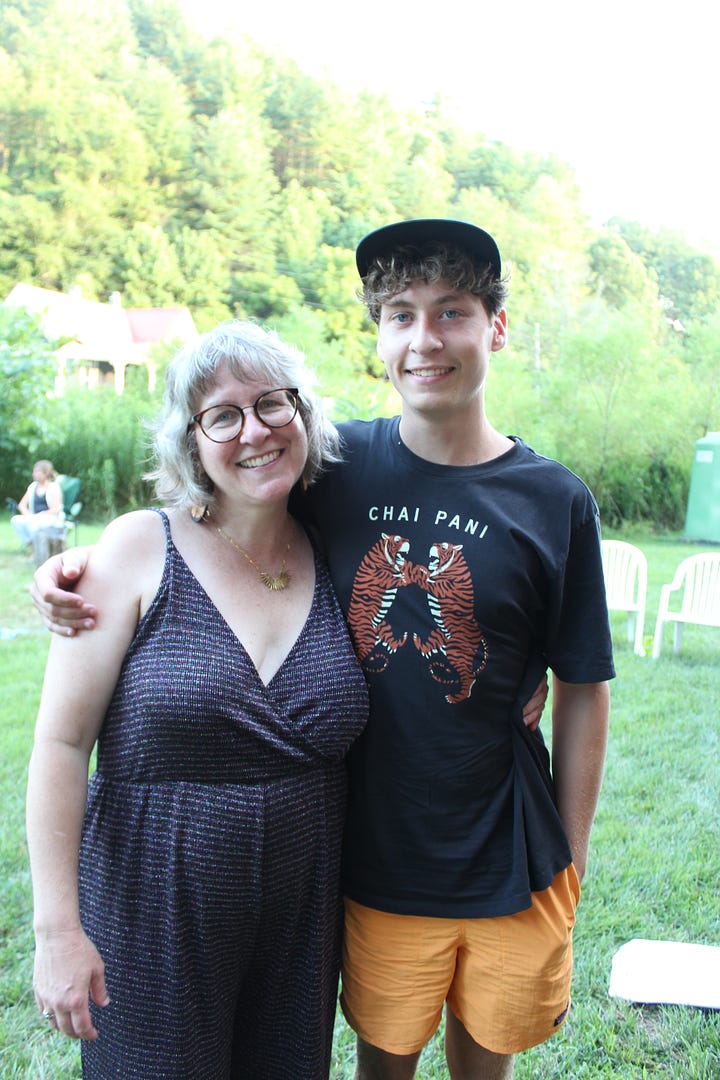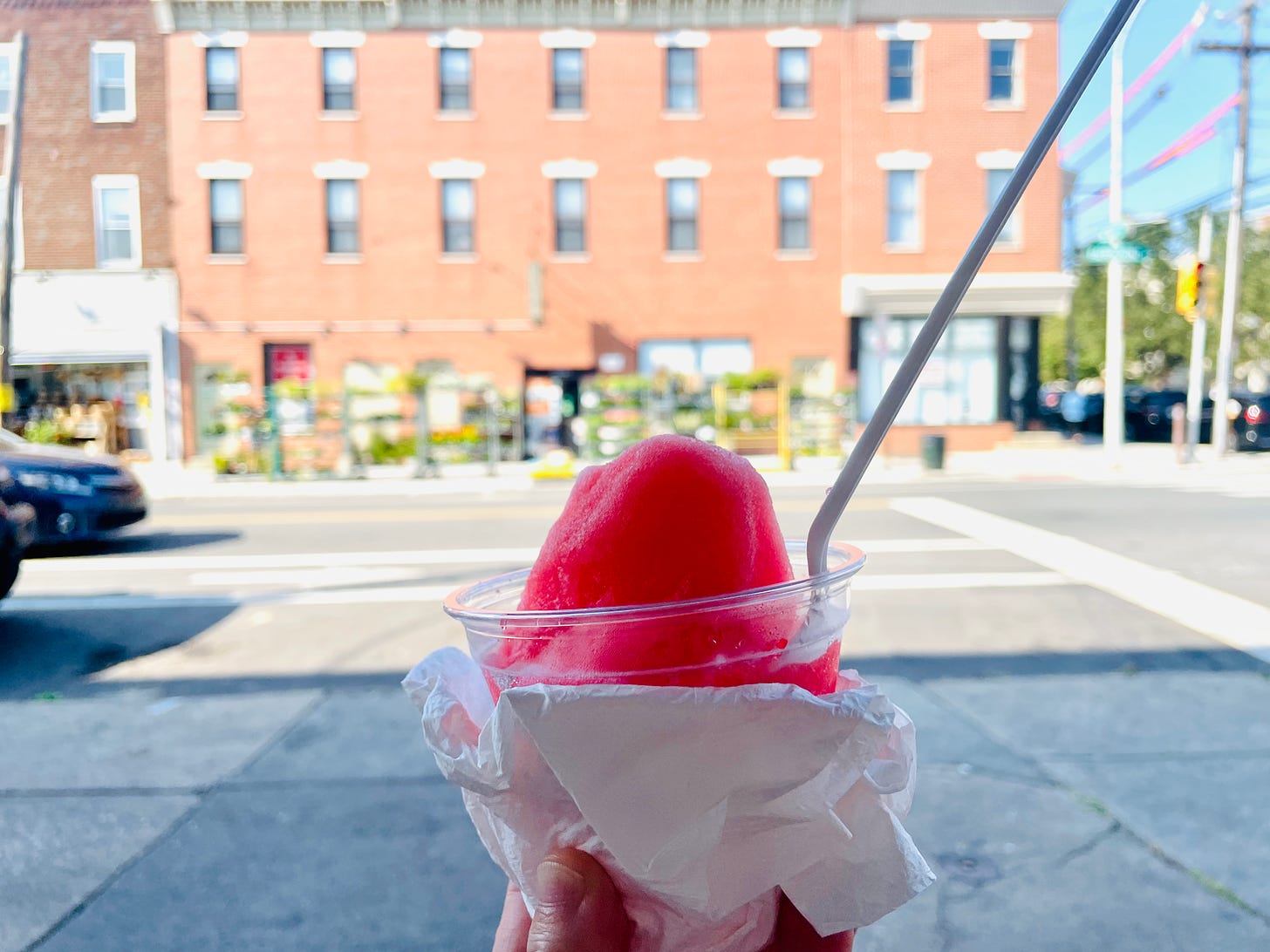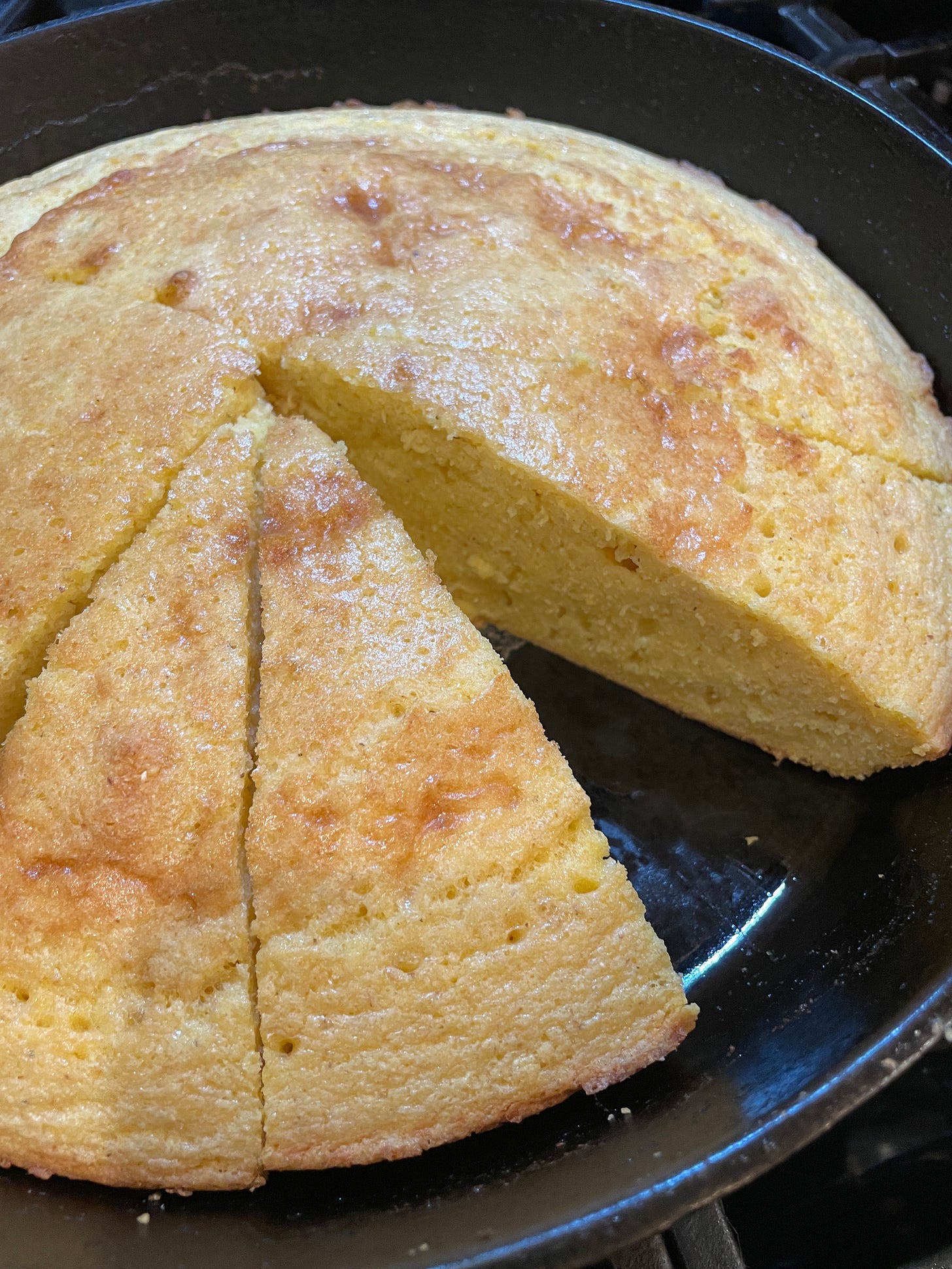Greetings from the twilight of summer: school starts tomorrow, the pools are closing, the days are getting shorter, and the thinning light evokes that tender, bittersweet feeling of anticipatory nostalgia—the longing for the thing that hasn’t left yet—the yearning for the summer that still lingers on the porch, in the garden, in the corners of the yard.
Yesterday, being Sunday, I planned to write, but through a series of unforeseen circumstances and much to my surprise, I found myself renting an electric bicycle and flying up the Ben Franklin Parkway to meet up with three people I love, past the Parkway Central Free Library, past the Barnes Foundation and the Basilica of Saints Peter and Paul, past the line stretching around the block of people waiting to take their picture with the Rocky statue. I found myself eating flan from a French bakery, I found myself ditching the electric bike in favor of a tourist quadracycle with those three people I love (an endeavor which was absolutely as silly and hilarious and gorgeously frivolous as you might imagine), I found myself sitting on a stoop with them eating strawberry lemonade water ice in the sunset. In short, I found myself having a perfect summer day in the city, a last hoorah.
On the quadracycle, we visited the Ellen Phillips Samuel Memorial, a series of terraced sculpture gardens along the Schuylkill River between Boathouse Row and the Girard Avenue Bridge. Spanning from the 1930s to the 1960s, the sculptures ostensibly commemorate “the history of the United States of America” but were described by Penny Balkin Bach of the Association for Public Art as “a monument to the confusion about what constituted modern public art.” There were many sculptures to men and manliness, to empire and industriousness: The Preacher, The Statesman, The Scientist, The Poet, The Puritan, The Quaker, The Ploughman, The Miner, The Laborer. Notably absent, however, was any monument to any vocation that might be thought of as woman’s work, or to the existence of women at all (except as a symbol of something else, like compassion, or victory, or the entire indigenous history of this land), and certainly not to any particular woman—in fact, according to Axios, a 2021 audit of public art conducted by Monument Lab found that “in Philadelphia, only four of the estimated 1,500 city-owned statues and public monuments depict real women.”
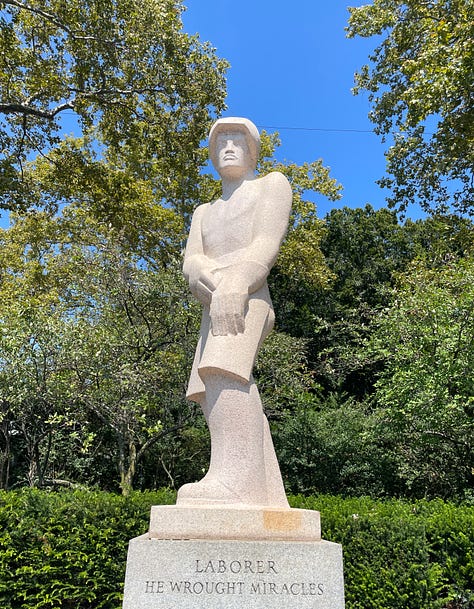
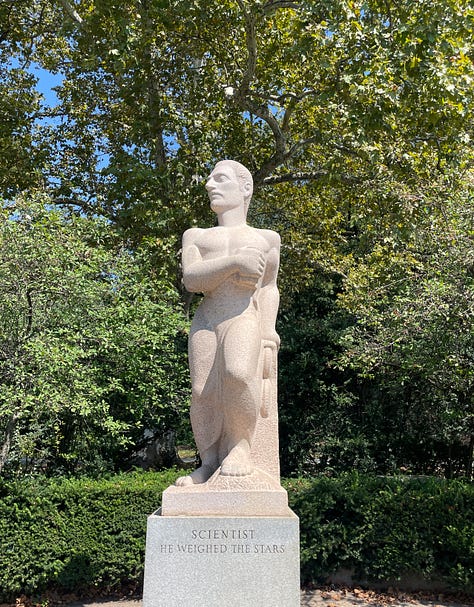
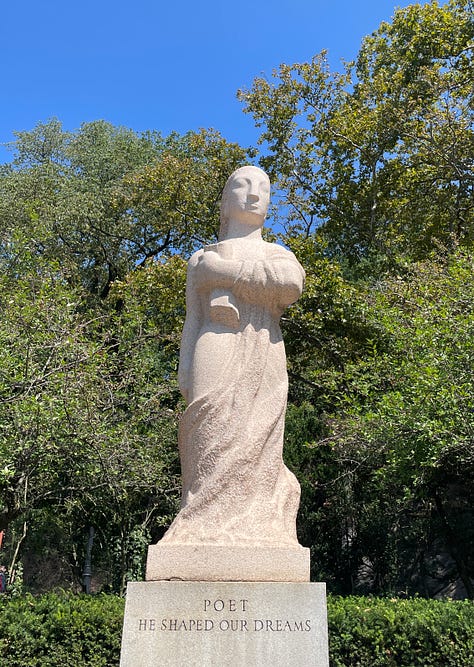
A woman’s work is never done, as the saying goes, and apparently neither is it ever seen. The work of care, the labor of love, the labor of labor and birth: lost to history, washed out to sea.
18 years ago this week, I was 37 weeks pregnant and a couple months out from quitting my job waiting tables at a brunch place in downtown Asheville. I was sweating it out, planning a home birth with an unlicensed lay midwife who failed me in many ways, most notably in failing to help me, to believe me, to protect me when I told her that something was very wrong, that I was itching so much I couldn’t sleep. I spent a frightful few nights in Mission hospital, with a rotating cast of baby doctors (by which I mean doctors who themselves seemed to be babies) who theorized that my dangerously elevated liver panels and the scabs on my hands and feet from the uncontrollable itching was maybe due to too much nettles and raspberry leaf tea (it was not). They couldn’t help me either. Finally my friend Keri—one of my only friends who had children before I did—knew somebody who knew somebody who could help me. She gave me the name: Lisa Goldstein from Burnsville, and I looked her up in the phone book, dialed the number and she answered. I told her what was going on and she immediately said, “you know you have cholestasis, right?”
“YES!” I responded, so grateful that finally, somebody was listening, somebody understood (I had already self-diagnosed myself with the liver disorder via meticulous googling, but no health care provider had, as of yet, believed me).
“You know we need to get the baby out as soon as possible, right?” Lisa said, referring to the very high rate of stillbirth associated with cholestasis.
“YES!” I replied. I was so relieved.
“OK, pack your bags and come see me tomorrow,” she said, which is exactly what we did, and exactly how I found myself, a couple of days later, giving birth in the tiny hospital in Spruce Pine, North Carolina, three weeks early.
As it turns out, fate and fortune had brought me to the doorstep of a living legend: Lisa Goldstein, a sex educator, cake lady,1 and lay midwife so beloved that, in 1983, when the North Carolina State Legislature banned lay midwifery, by popular demand she became the only legal non-nurse midwife in the state. Lisa learned from traditional midwives around the world, apprenticed with Fern Kingham, a granny midwife who left Lisa her house when she passed, and later became a RN and certified nurse midwife, a mentor and guide to countless patients and professionals.
In the hospital, my attending nurse was a patient of Lisa’s too: not only had Lisa attended the births of my nurse’s children, but my nurse herself had been delivered by Lisa. The nurse, whose name I never knew, sat by my bedside for hours, knitting as I labored and moaned. I remember thinking how that must be the hardest thing of all to do—to do nothing, just to sit there and bear witness to another person’s pain without intervening, without fixing, without shushing or shutting down the wails and the cries and the moans just to avoid your own discomfort. I wanted to learn to be like that, I decided.
The next day, when I was still in the hospital under observation, the nurse, in her plucky, deep country accent, said “you did so good hunny!”
“It was really hard!” I replied, stating the ridiculously obvious, my mind still swimming.
“Well,” she smiled playfully, practically pinching my cheeks, “they don’t call it labor for nothin’!”
Now that the baby is about to turn 18, on the threshold of his own new life, on the cusp of a new season—I feel that bittersweet longing for the thing that hasn’t left yet, the liminal feeling of something being over but the next thing not truly begun, the feeling of love as such a holy, lonely, raw, messy, precarious, beautiful, burdensome thing to bear. I feel so bereft, I feel so grateful. I feel beside myself, and every form of love, seen and unseen, is like this. I want to bear witness to that love, to not look away, to not try to fix it or to intervene.
And so to all those who bear life, to all those who bear the burden of care and the brunt, the weight, the heat, the loss, the pain of it: may every good thing bear witness to your labor, may every good thing be a monument to your love.
Home
Edna Lewis and Scott Peacock’s Sour Milk Cornbread.
One of my all-time favorite and most-used cookbooks is the gorgeous The Gift of Southern Cooking by Edna Lewis and Scott Peacock, and the most grease-splattered page of my copy is the one containing the recipe for “Our Favorite Sour Milk Cornbread.” I increase the recipe by half to make a taller, fluffier cornbread (and have done so here); it produces the cornbread that was ubiquitous at every Sunday dinner at my grandmother’s house in Monroe, Georgia: salty and tangy, tender but tough enough to sop up the pot likker from the greens and the juice from the fresh tomatoes from my Grandaddy’s garden. I make it to round out soups, and then bring it to work throughout the week as a snack.
Preheat oven to 450 degrees. Place in a 9-inch cast iron skillet:
3 tablespoons salted butter
Place the skillet in the oven as it preheats, until the butter is melted and slightly foaming, then pull the skillet out and set aside.
Whisk together:
2 1/4 cups cornmeal (the recipe calls for white but I prefer yellow; I use the Indian Head brand stone-ground yellow cornmeal found in the grocery stores here in PA)
1 1/2 teaspoon salt
1 1/2 teaspoon baking powder
In a separate bowl, whisk together:
2 2/3 cup buttermilk, yogurt, or sour milk (I use soy milk plus a few teaspoons of apple cider vinegar, left to sit for 5 or so minutes to curdle)
3 eggs, at room temp, lightly beaten
Combine the wet with the dry ingredients, stirring gently until no lumps remain, then stir in the melted butter just until combined. Pour the batter into the hot skillet, and bake for 30-40 minutes.
The World
A book recommendation (even though I just started the book).
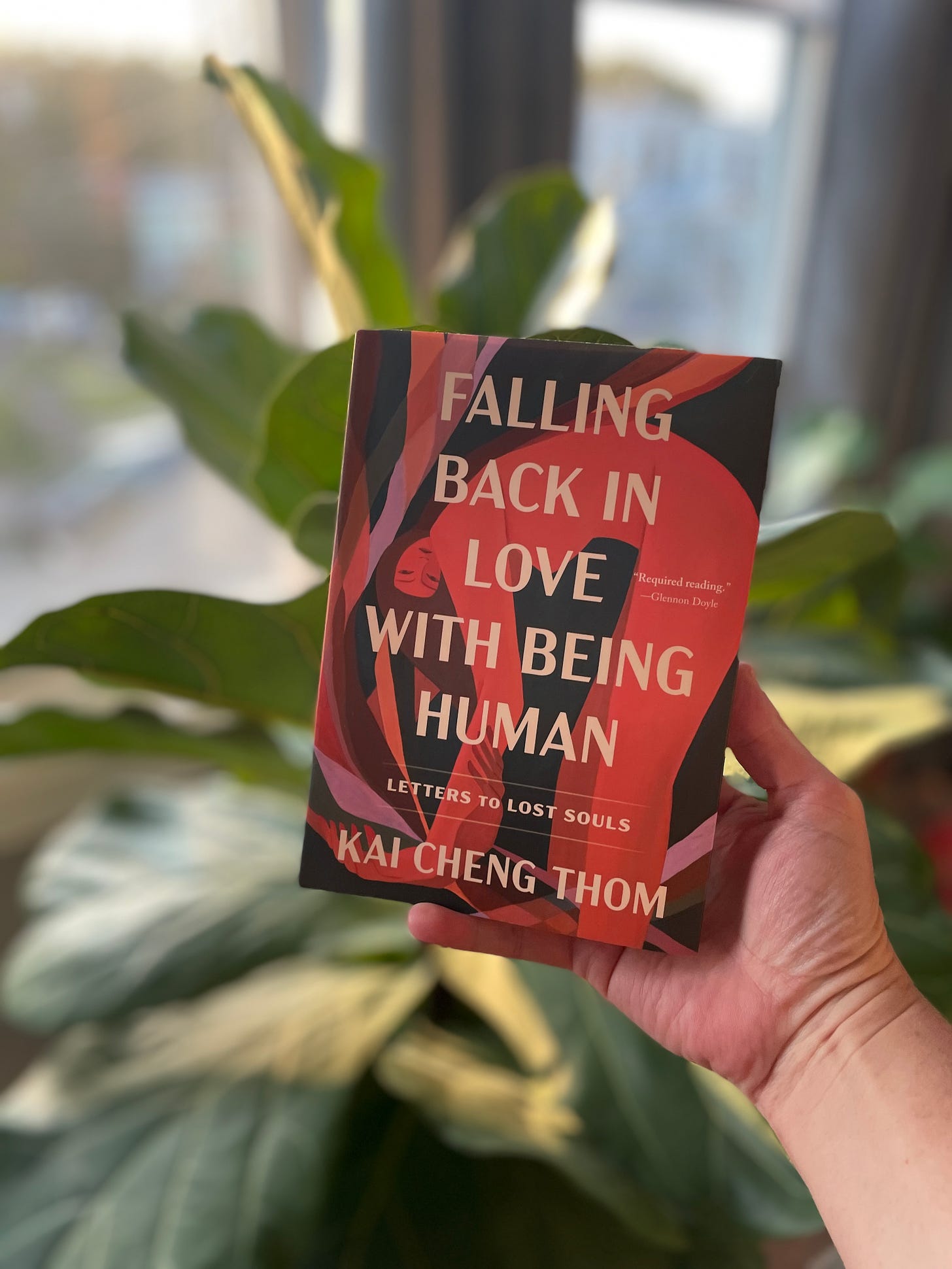
Kai Cheng Thom is a writer, therapist, and non-binary trans femme. Thom is one of several leftist, social justice-minded authors I have been reading and learning from in the past few years who are thinking, writing, and talking about the cruelties of fundamentalist identitarianism and cancel culture within leftist social justice communities. Others are Clementine Morrigan, Africa Brooke, Sarah Shulman, and adrienne maree brown. This is a complex issue and I have much to say about it in the future, but for now I will just say that for many of us, life has brought us to our knees and broken our hearts until all that’s left is love. Love is the place we can come back to, again and again, and I’m grateful to these fellow travelers on that journey.
Wheel of Fortune
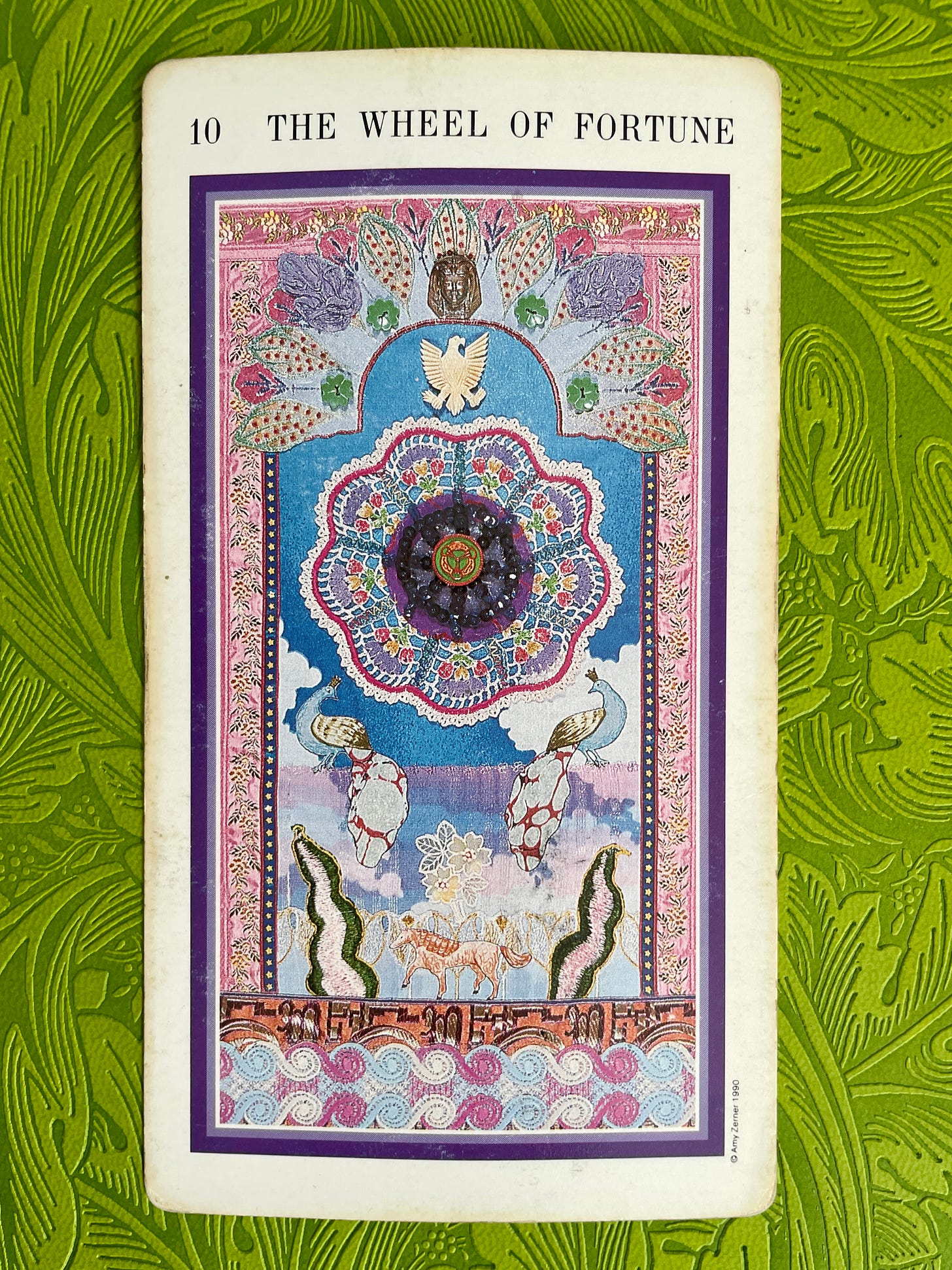
It’s the circle of life, baby! The wheels turn: the wheels of the seasons of the earth, the wheels of the seasons of our bodies, the wheels of the seasons of human life, culture, social movements and social change. What goes up must come down. No feeling lasts forever, and every storm will run out of rain, eventually. The Wheel of Fortune is the symbol of the endless cycles of life, but it is also a symbol of good luck, of Fortuna smiling upon you: this card marks a ripe time to roll the dice, take a risk for love, take a risk for humanity, take a risk for the beauty and glory of life, because fortune favors the bold! I love y’all and I hope you have a great two weeks—I’ll be traveling next weekend so expect a re-run on Sunday, and I’ll see you the following week. xo
Home + The World explores the ways we become exiled: through trauma, addiction, oppression, grief, loss, and family estrangement; and the ways we create belonging: through food and cooking, through community care and recovery and harm reduction, through therapy and witchcraft and making art and telling stories and taking pictures and houseplants and unconditional love and nervous system co-regulation and cake. All content is free; the paid subscriber option is a tip jar. Thank you for being here and thank you for being you.
⚔️❤️ Jodi
